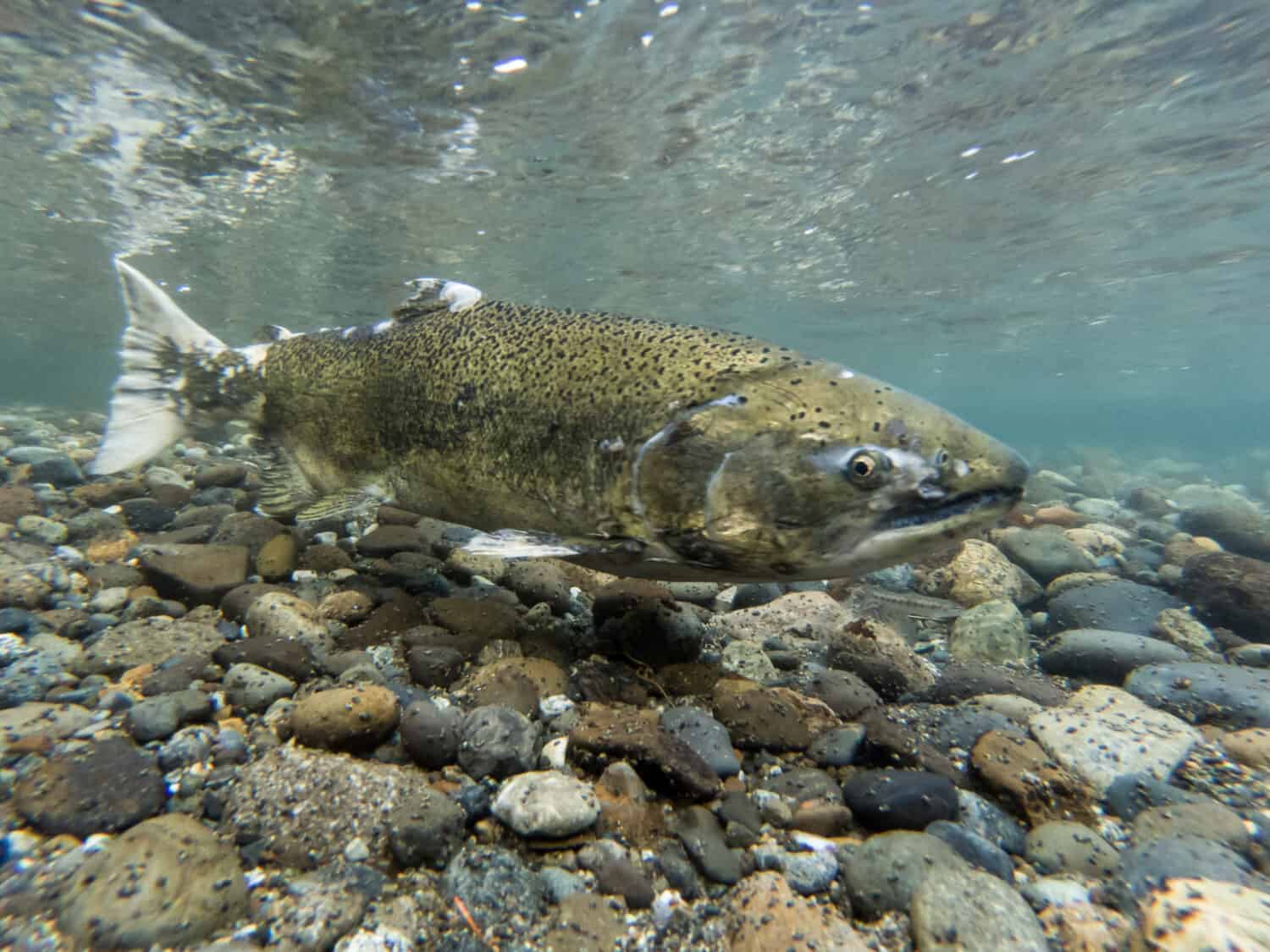The chinook salmon is the official state fish of Oregon.
They are native to the Pacific Ocean and several rivers throughout North America. They’re the largest salmon in the Pacific Ocean, so the Chinook salmon is also known as the “king salmon.” In fact, this species can grow up to 100 pounds long and more than 5 feet long.
Sadly, some of their populations are endangered due to overfishing and pollution.
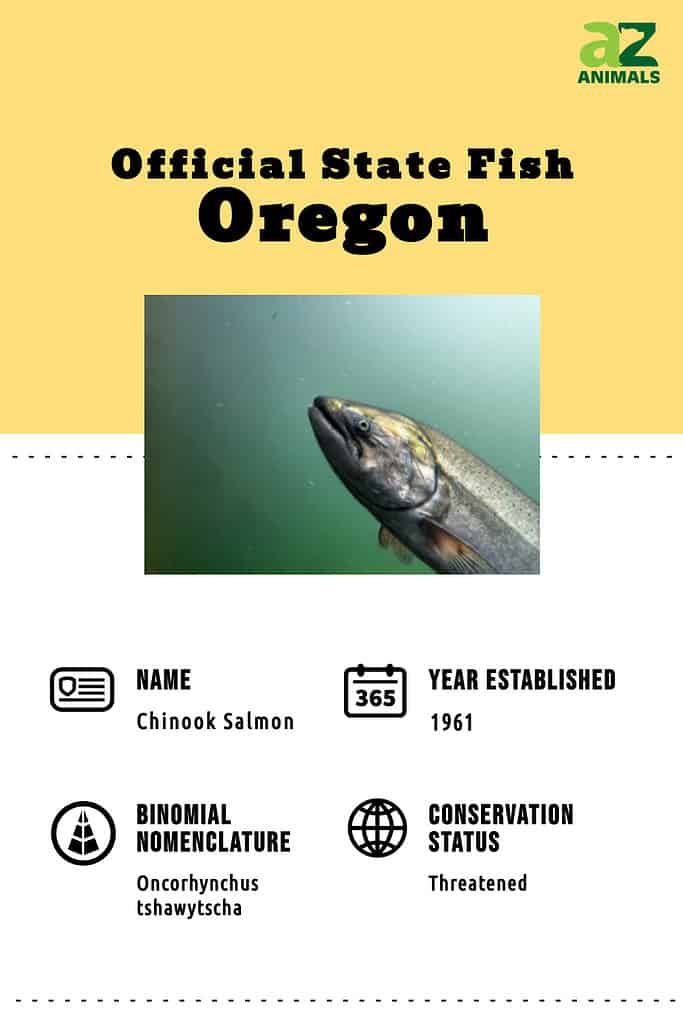
What is the Average Weight of Chinook Salmon?
Adult Chinook salmon typically weigh between 10 and 50 pounds. However, these fish can weigh up to 130 pounds in rare cases. The current world record for a sport-caught Chinook salmon is 97 pounds, and the commercially-caught world record is 126 pounds.
What is the Average Size of Chinook Salmon?
The typical adult Chinook salmon is between 24 and 36 inches long but can reach up to 60 inches for the largest fish.
Where Can Chinook Salmon Be Found?
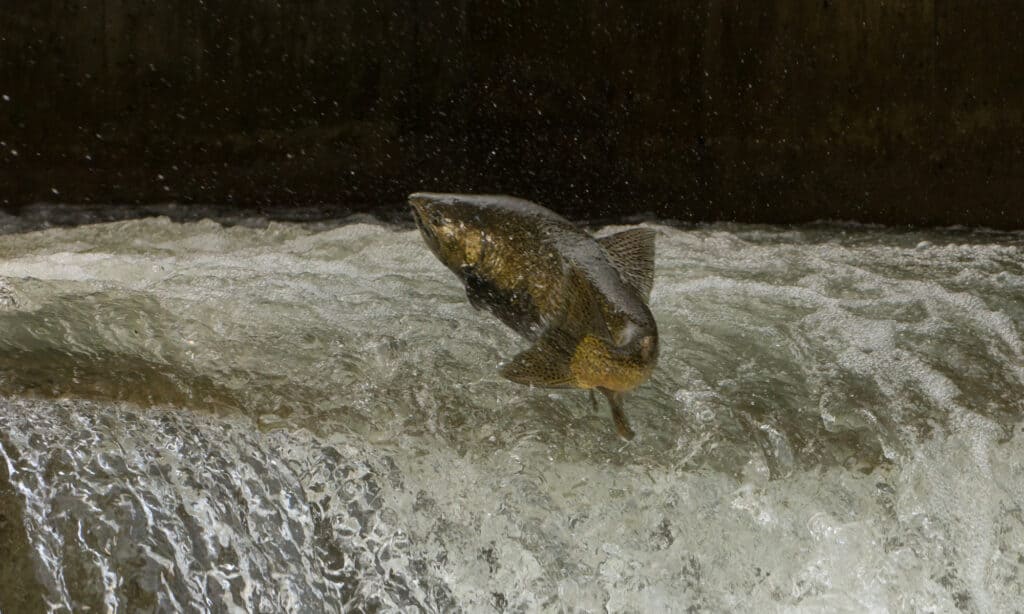
Chinook salmon are found across many different areas.
©Evan Linnell/Shutterstock.com
Chinook salmon can be found in several parts of the world. In North America, they can be found along the west coast and streams from California up to Alaska. They can also be found in the Great Lakes since they were introduced there in an attempt to control the alewife population. Outside of North America, Chinook salmon are found in Japan and Russia.
Chinook salmon are an anadromous fish species that hatch in freshwater environments like streams and lakes, then migrate to the ocean to grow.
Like other salmon species, Chinook salmon are considered euryhaline, meaning they can live in saltwater and freshwater environments. After Chinook salmon hatch and migrate to the ocean, they typically remain there for three to four years before returning to rivers and streams to spawn.
In Oregon, you can find Chinook salmon in most rivers. However, there are two “types” of Chinook salmon: spring-run and fall-run. As you might imagine, the sping-run salmon enter freshwater in the spring, and the fall-run salmon enter freshwater in the fall. They prefer different areas.
Some popular spring chinook runs in Oregon are on the north and south coasts, the Columbia River, the Willamette River, and its tributaries. Some of the popular fall Chinook runs are in the Columbia River, smaller tributaries, northeast Oregon, and Willamette River.
What do Chinook Salmon Eat?
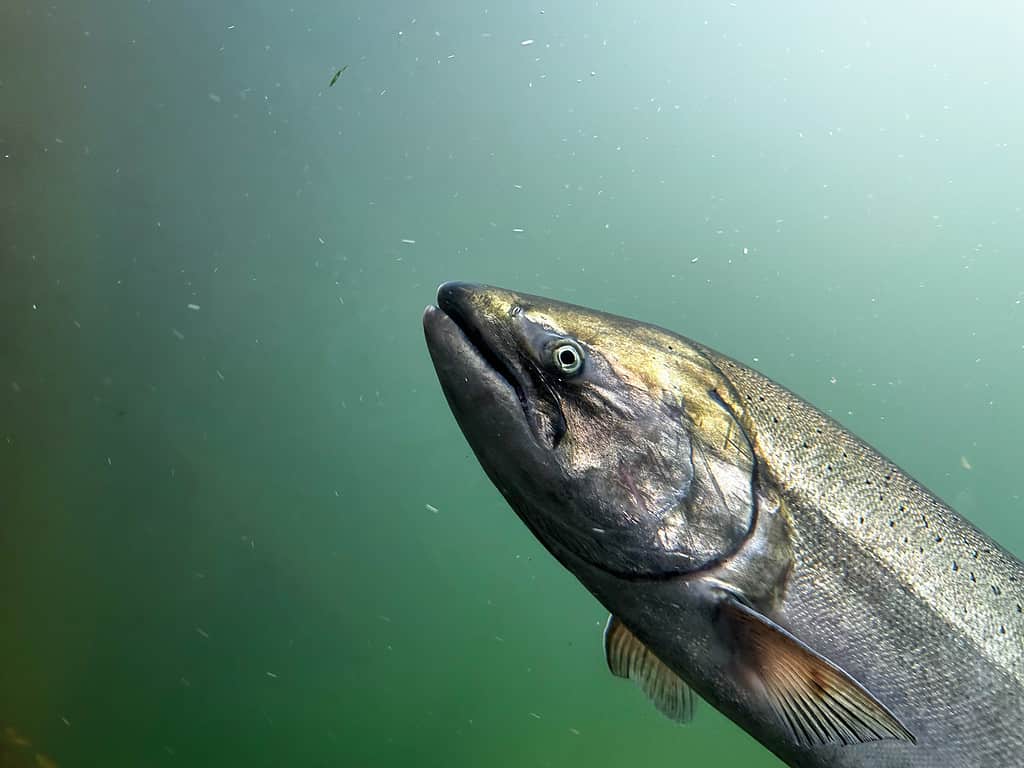
The Chinook Salmon in the state fish of Oregon. People also call it king salmon.
©Heather Ray/iStock via Getty Images
As a euryhaline species, the diet of Chinook salmon depends largely on what environment they find themselves in and their age. In freshwater environments, while they are young, they typically eat smaller crustaceans and amphipods (an order of very small crustaceans lacking a carapace). Once they are older and living in the ocean, Chinook salmon subsist almost entirely on other smaller fish.
What Does Chinook Salmon Taste Like?
Considered by many to be the best-tasting species of salmon, the Chinook salmon has a rich buttery flavor. This flavor is due to being quite high in Omega-3, which helps develop the distinct flavor that Chinook salmon has.
Chinook salmon meat can vary in color, depending on its diet and environment. The meat can be white or red as sockeye salmon meat or any shade in between.
Why is Chinook Salmon So Expensive?
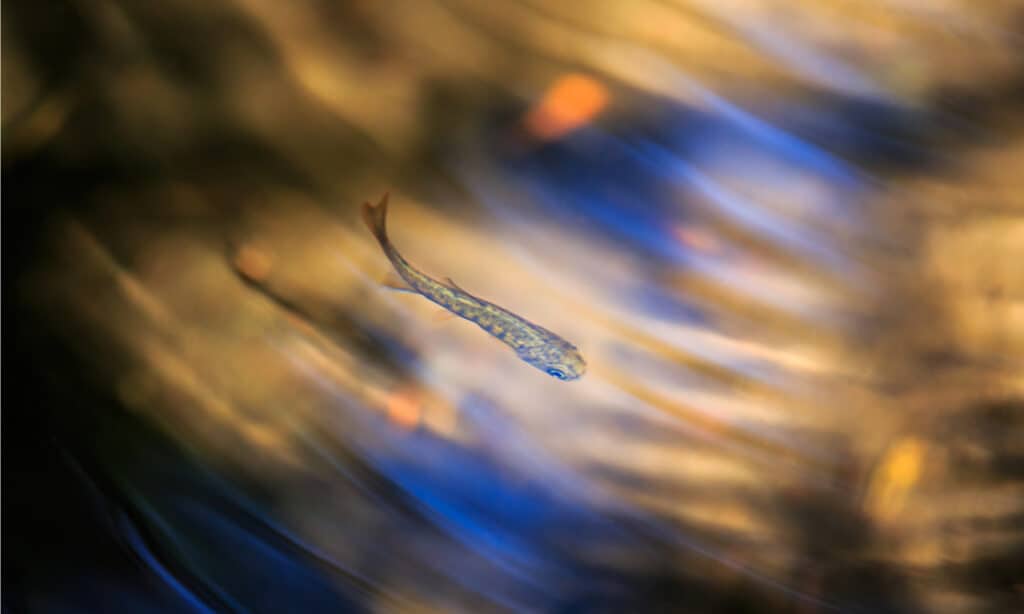
Chinook Salmon are rare, largely due to overfishing.
©Kevin Cass/Shutterstock.com
Compared to annual harvests of salmon, Chinook salmon appears to be much rarer than other species. An estimated 272 million pounds of sockeye salmon were harvested in 2021, in stark contrast to the approximately 8 million pounds in 2021.
This huge gap in rarity is why Chinook salmon can fetch up to $70 USD per pound. Despite this rarity, they are still considered the state fish of Oregon.
Thank you for reading! Have some feedback for us? Contact the AZ Animals editorial team.

